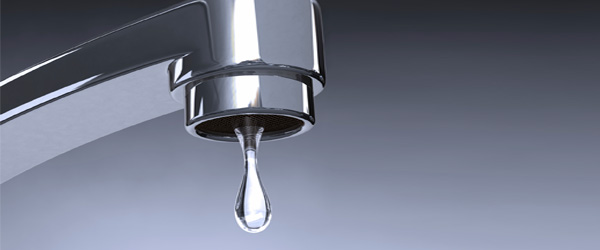MANAGING WATER
This page explains the essentials of managing water.
Basic Water Tips
- Allow people to drink according to their needs. Many people need even more than the average of one gallon per day. The individual amount needed depends on age, physical activity, physical condition and time of year.
- Never ration drinking water unless ordered to do so by authorities.Drink the amount you need today and try to find more for tomorrow. Under no circumstances should a person drink less than one quart (four cups) of water each day. You can minimize the amount of water your body needs by reducing activity and staying cool.
- Drink water that you know is not contaminated first. If necessary, suspicious water, such as cloudy water from regular faucets or water from streams or ponds, can be used after it has been treated. If water treatment is not possible, put off drinking suspicious water as long as possible, but do not become dehydrated.
- Do not drink carbonated beverages instead of drinking water. Carbonated beverages do not meet drinking-water requirements. Caffeinated drinks and alcohol dehydrate the body, which increases the need for drinking water.
- Turn off the main water valves. You will need to protect the water sources already in your home from contamination if you hear reports of broken water or sewage lines or if local officials advise you of a problem. To close the incoming water source, locate the incoming valve and turn it to the closed position. Be sure you and your family members know how to perform this important procedure.
Water Sources
SAFE SOURCES
- Melted ice cubes.
- Liquids from canned goods such as fruit or vegetables.
- Water drained from pipes. To use the water in your pipes, let air into the plumbing by turning on the faucet in your home at the highest level. A small amount of water will trickle out. Then obtain water from the lowest faucet in the home.
- Water drained from the water heater. To use water in your hot-water tank, be sure the electricity or gas is off and open the drain at the bottom of the tank. Start the water flowing by turning off the water intake valve at the tank and turning on the hot-water faucet. After you are notified that clean water has been restored, you will need to refill the tank before turning the gas or electricity back on. If the gas is turned off, a professional will be needed to turn it back on.
UNSAFE SOURCES
- Radiators Hot water boilers (home heating systems).
- Water from the toilet bowl or flush tank.
- Water beds. Fungicides added to the water or chemicals in the vinyl may make water unsafe to use.
- Swimming pools and spas. Chemicals used to kill germs are too concentrated for safe drinking but can be used for personal hygiene, cleaning and related uses.
Water Treatment

If you have used all of your stored water and there are no other reliable clean water sources, it may become necessary in an emergency situation to treat suspicious water. Treat all water of uncertain quality before using it for drinking, food washing or preparation, washing dishes, brushing teeth or making ice. In addition to having a bad odor and taste, contaminated water can contain microorganisms (germs) that cause diseases such as dysentery, cholera, typhoid and hepatitis.
There are many ways to treat water. None is perfect. Often the best solution is a combination of methods. Before treating, let any suspended particles settle to the bottom or strain them through coffee filters or layers of clean cloth. Make sure you have the necessary materials in your disaster supplies kit for the chosen water treatment method.
BOILING
Boiling is the safest method of treating water. In a large pot or kettle, bring water to a rolling boil for one full minute, keeping in mind that some water will evaporate. Let the water cool before drinking.
Boiled water will taste better if you put oxygen back into it by pouring the water back and forth between two clean containers. This also will improve the taste of stored water.
CHLORINATION
You can use household liquid bleach to kill microorganisms. Use only regular household liquid bleach that contains 5.25 to 6.0 percent sodium hypochlorite. Do not use scented bleaches, color safe bleaches or bleaches with added cleaners. Because the potency of bleach diminishes with time, use bleach from a newly opened or unopened bottle.
Add 16 drops (1/8 teaspoon) of bleach per gallon of water, stir and let stand for 30 minutes. The water should have a slight bleach odor. If it doesn’t, then repeat the dosage and let stand another 15 minutes. If it still does not smell of chlorine, discard it and find another source of water.
Other chemicals, such as iodine or water treatment products sold in camping or surplus stores that do not contain 5.25 or 6.0 percent sodium hypochlorite as the only active ingredient, are not recommended and should not be used.
DISTILLATION
While boiling and chlorination will kill most microbes in water, distillation will remove microbes (germs) that resist these methods, as well as heavy metals, salts and most other chemicals. Distillation involves boiling water and then collection of only the vapor that condenses. The condensed vapor will not include salt or most other impurities. To distill, fill a pot halfway with water.
Tie a cup to the handle on the pot’s lid so that the cup will hang right-side-up when the lid is upside-down (make sure the cup is not dangling into the water) and boil the water for 20 minutes. The water that drips from the lid into the cup is distilled.
Effectiveness of Water Treatment Methods
| METHODS | KILLS MICROBES |
REMOVES OTHER CONTAMINANTS (HEAVY METALS, SALTS, AND MOST OTHER CHEMICALS) |
|---|---|---|
| Boiling | Yes | No |
| Chlorination | Yes | No |
| Distillation | Yes | Yes |
Source: www.ready.gov



Nice web page. Last year a subdivision of Portland had to boil their drinking water for several weeks because of some contamination in the drinking water. This is good information.
Thanks David for your comment. We hope you continue to find information of interest. We are continually adding new articles to the site.